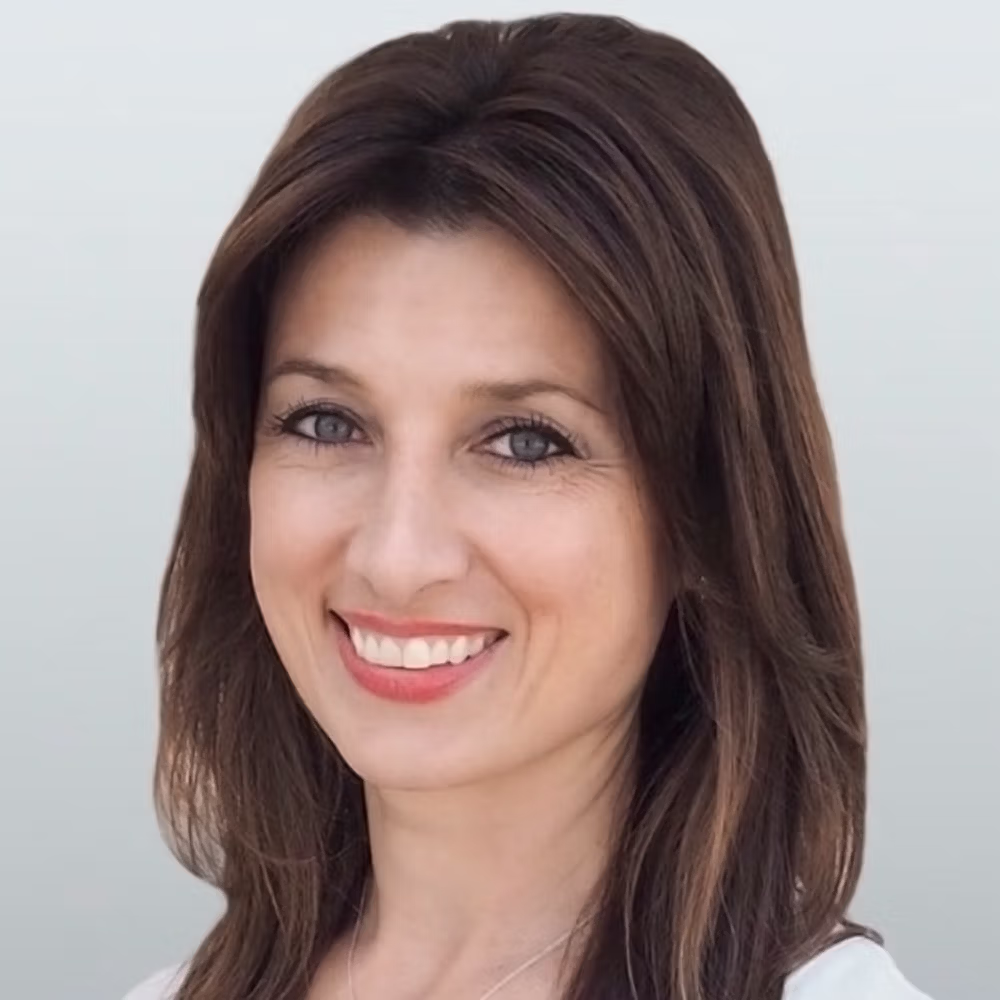Brownstone Institute
Listen to the Kids
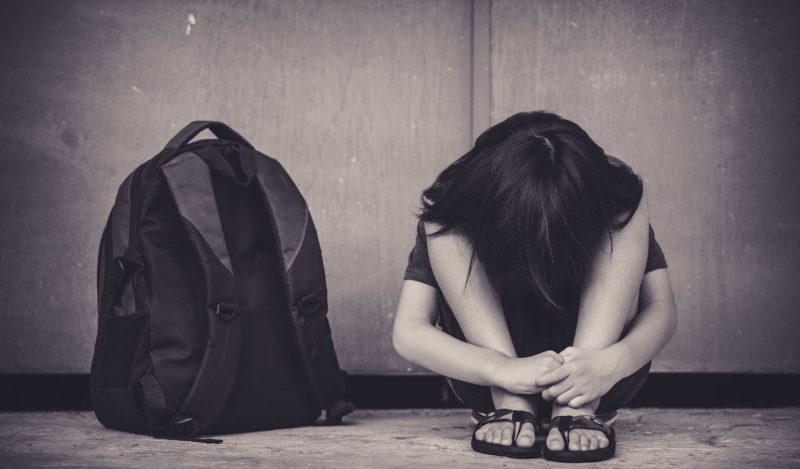
From the Brownstone Institute
BY
People often ask me why I still care about school closures and other covid restrictions that harmed a generation of children. “Schools are open now,” they say. “It’s enough already.”
No. It’s not. The impact to this generation of children continues. And so do many of the restrictions impacting young people.
It was just this week that New York City public schools lifted the ban on unvaccinated parents entering public school buildings.
This meant a parent who was unvaccinated could not attend a parent-teacher conference in person. Or watch their child play basketball. They could, however, attend a Knicks’ game at Madison Square Garden with 20,000 other basketball fans. This rule seemed designed specifically to punish children.
Colleges are some of the last places requiring vaccination — even boosters, in some instances, like at Fordham University. These young adults are least at risk from covid, most at risk from vaccine-induced myocarditis and are some of the last Americans required to be boosted. It makes no sense.
Rather than do my own rant about why I still care about the lasting harm done to children, I’d like to let the kids and parents speak for themselves.
The teens and parents cited below are all featured in a documentary film I’m making. I want their stories told. This all needs to be documented because the narrative is already shifting:
“Yeah schools shouldn’t have been closed so long but how could we have known! It’s over now. Time to move on.”
“Let’s declare an amnesty. We need to forgive the hard calls people needed to make without enough information. Good people did the best they could!”
“The open-schoolers may have been right but for the wrong reasons so they’re still terrible people. And besides it’s not a competition! No gloating! Let’s focus on the future!”
But it’s not over. The kids are not alright. And there is insufficient focus on how to reintegrate them and help them recover. This article, from the New York Times on January 27, lays bare the harms done, the possible lifetime effects, and the lack of attention and care being paid to helping kids recover:


I will continue to advocate for them, to tell their stories, to try to get them the help they still need and deserve. And to ensure this never happens again.
It’s time we listened to the children and parents impacted.
Garrett “Bam” Morgan, Jr., high school student. Astoria Queens, NY:
“I was so upset. Why is it that someone who pays for school and has more money to throw around . . .why do they get to play football? And I don’t. What is the difference? Because we’re playing the same sport. It’s not like they’re playing something totally drastically different. It’s the same sport. We’re doing the same things, and they get to practice, they get to play. And I don’t, and for me it was just like, why? Why me? Why my teammates? Why is it that we don’t get to have fun? Why is it that we don’t get to play the sport that we love too? How am I going to get into a college if I don’t have a junior year of football?
“I was gaining weight. And I was getting in a place where I had to start thinking of alternatives to football, thinking of life without football. Then I would try and go out and play with my friends, towards 2021 when it started to become, okay, you can somewhat go out, just stay socially distanced. But by that time, the damage was done, right?”
Scarlett Nolan, high school student. Oakland, CA:
“I didn’t make any new friends. No one did. I mean, how could you, you’re just talking to literal black boxes on a computer.”
“I don’t wanna blame it all on school closures, but it’s been a really, really big thing for me. That’s changed my life so much. That’s not how it’s supposed to go in school. You’re supposed to have school. It’s supposed to be your life. School is supposed to be your life from kindergarten to senior year. And then you go to college if you want, but that’s supposed to be your life. That’s your education. You have your friends there, you find yourself there. You find how you wanna be when you grow up there. And without that, I lost who I was completely. Everything who I was. I wasn’t that person that worked to get straight A’s anymore. I didn’t care. I was just sad.”
Ellie O’Malley, Scarlett’s mom. Oakland, CA:
“She had finished her eighth grade. She had missed everything. She’d missed her graduation. She’d missed this trip to Washington. And then she started her new school [high school] on-line. [She was] very disengaged, never saw people’s faces, no one had the camera on. I mean it was school in like the thinnest most loose [sense] of the word. For the most part it was pretty dire and terrible. By January 2021, she really just no longer had the motivation to do it. She wasn’t getting out of bed. She was really depressed at that point.”
“A lot of it was just mental health, suicidal tendencies, self-harm. The first time Scarlett went to hospital, she kind of had a bit of a nervous breakdown. I’d never experienced that. She was screaming and clawing at herself. And we were like, what do we do? What do we do?”
Miki Sedivy, a mom who lost her teenaged daughter Hannah to an accidental drug overdose in 2021. Lakewood, CO:
“You’re taking children out of their natural environment of playing with each other, interacting socially and learning coping skills by interacting with other children. And when you take all of that away and all of a sudden these kids are in isolation, they mentally don’t know how to handle it. We can go [through] short times of isolation, but we’re talking a year and a half. [That’s] of a lot of isolation.”
Jennifer Dale. Her 11-year-old daughter has Down syndrome. Lake Oswego, OR.
“The school closures were devastating for her. I don’t think I realized it at first. At first I thought it was safer. Lizzie, a child with Down syndrome, was probably more susceptible to a respiratory virus. She’s had more respiratory issues than her siblings. So at first I thought it was the right thing to do As time went on, I don’t think people realized how isolated she was. She doesn’t have a means of reaching out and saying Hey, how you doing? I miss you. I wanna see you.”
“What Lizzie really needs is to look at her peers and how are they zipping up their jacket, or how are they coming in in the morning and making a food selection for lunch. That peer interaction and that peer role modeling is some of the best learning that my daughter can experience. But that role modeling is gone. When you’re online she doesn’t get to see what the other kids are doing. She wasn’t out seeing people. Nobody knew that she was struggling. It was all in our house. It was impossible for a young person with cognitive delays to understand why, why was the world suddenly closed? Why suddenly could I not see my friends? Why am I only seeing them on a screen and how do I interact?”
Am’Brianna Daniels, high school student. San Francisco, CA.
“As time moved on, like later in the year, I started to realize I really wanted to be back in school. I was 24/7 [on Zoom] and I think that’s what took a toll on me. . . I actually stayed doing Zoom in my living room that way I wasn’t tempted to fall asleep or anything. This did not help. I still did fall asleep sometimes.”
“I had like very little motivation to actually get up, get on Zoom and attend class. And then I think coming up on the year anniversary of the initial lockdown and then the lack of social interaction is kind of what took a toll on my mental health since I am such a social person. And so it really got to a point where I was just not going to class.”
“And it got really bad to the point where I was either over-eating or just not eating very much, and I was kind of dehydrated during my depressive moods. And eventually I did get in contact with the therapist. It helped a little bit, but not to the extent that I would have hoped.
Nelson Ropati, high school student. San Francisco, CA.
“I just didn’t like staring at a screen for an hour for class. I just couldn’t do it. I would fall asleep or just lose focus easily.”
“It wasn’t really mandatory to go to class. So I ain’t gonna lie. I didn’t really go to class the rest of my junior year when covid hit and they kind of just passed everyone.”

Lorna Ropati, Nelson’s mom. San Francisco, CA.
“I felt bad for him because then that’s when he started doing nothing else, but just like eating. I said you’re not hungry. It’s just a habit. Don’t go to the fridge. He just mainly stayed home and did whatever he could through his on-line courses and just stayed home. I think he didn’t go out of the house at one point for six months. He didn’t go nowhere. He never even stepped out of the house. So that was not good. I said, you need to get out, you need to stop being in this little shell and bubble that you’re in. It’s okay. You can go out.”
Jim Kuczo, lost his son Kevin to suicide in 2021. Fairfield, CT.
“Well we were very concerned because of the grades — that was the tip off. But again, it was hard because you can’t go out with your friends. We were concerned. We asked the guidance counselor and the therapist, is he suicidal? They said no.”
“You cannot treat kids like prisoners and expect them to be okay. I think that we, our leaders, put most of the burden on children.”
“I went through lots of guilt — what did I do to cause my son to kill himself.”
Kristen Kuczo, Kevin’s mom. Fairfield, CT.
“He [Kevin] wound up not playing football and then we kind of just started noticing he just was doing less and less. His grades were starting to drop. Really the biggest red flag for me was the grades dropping.”
“The day after he took his life, I was supposed to be having a meeting with the guidance counselors and we were looking into getting him a 504, which would allow him extra time to do things and possibly on exams. We were pursuing that as a possibility to try to help support him in the school setting. Because he had spoken to us about having trouble focusing and feeling like he just couldn’t do it.”
“All these doctors, they weren’t taking anybody. They weren’t taking patients because they were full. They didn’t have any space to take on new clients. It was shocking. So I didn’t have an appointment with a psychiatrist until about a week and a half after Kevin passed.”

I’ll leave you with a few words from Garrett Morgan, Jr. He’s struggling to get his life back on track. To get his grades back up. To lose the 80 pounds he gained. To get back in shape. To play football again. To get that college scholarship.
He’s a fighter. And I have confidence he’ll succeed. But he won’t forget what he and his peers lost, what was taken from them, and how much tougher his road ahead is because of it.


“This is something that my generation will not forget. This is also something that my generation will not forgive. The memories that we have lost, the experiences that we have lost, the skills that we have lost because of covid. And now we have to regain that and go out into the world. It is going to be something that will define us.”
Reposted from the author’s Substack
Brownstone Institute
The Unmasking of Vaccine Science

From the Brownstone Institute
By
I recently purchased Aaron Siri’s new book Vaccines, Amen. As I flipped though the pages, I noticed a section devoted to his now-famous deposition of Dr Stanley Plotkin, the “godfather” of vaccines.
I’d seen viral clips circulating on social media, but I had never taken the time to read the full transcript — until now.
Siri’s interrogation was methodical and unflinching…a masterclass in extracting uncomfortable truths.
A Legal Showdown
In January 2018, Dr Stanley Plotkin, a towering figure in immunology and co-developer of the rubella vaccine, was deposed under oath in Pennsylvania by attorney Aaron Siri.
The case stemmed from a custody dispute in Michigan, where divorced parents disagreed over whether their daughter should be vaccinated. Plotkin had agreed to testify in support of vaccination on behalf of the father.
What followed over the next nine hours, captured in a 400-page transcript, was extraordinary.
Plotkin’s testimony revealed ethical blind spots, scientific hubris, and a troubling indifference to vaccine safety data.
He mocked religious objectors, defended experiments on mentally disabled children, and dismissed glaring weaknesses in vaccine surveillance systems.
A System Built on Conflicts
From the outset, Plotkin admitted to a web of industry entanglements.
He confirmed receiving payments from Merck, Sanofi, GSK, Pfizer, and several biotech firms. These were not occasional consultancies but long-standing financial relationships with the very manufacturers of the vaccines he promoted.
Plotkin appeared taken aback when Siri questioned his financial windfall from royalties on products like RotaTeq, and expressed surprise at the “tone” of the deposition.
Siri pressed on: “You didn’t anticipate that your financial dealings with those companies would be relevant?”
Plotkin replied: “I guess, no, I did not perceive that that was relevant to my opinion as to whether a child should receive vaccines.”
The man entrusted with shaping national vaccine policy had a direct financial stake in its expansion, yet he brushed it aside as irrelevant.
Contempt for Religious Dissent
Siri questioned Plotkin on his past statements, including one in which he described vaccine critics as “religious zealots who believe that the will of God includes death and disease.”
Siri asked whether he stood by that statement. Plotkin replied emphatically, “I absolutely do.”
Plotkin was not interested in ethical pluralism or accommodating divergent moral frameworks. For him, public health was a war, and religious objectors were the enemy.
He also admitted to using human foetal cells in vaccine production — specifically WI-38, a cell line derived from an aborted foetus at three months’ gestation.
Siri asked if Plotkin had authored papers involving dozens of abortions for tissue collection. Plotkin shrugged: “I don’t remember the exact number…but quite a few.”
Plotkin regarded this as a scientific necessity, though for many people — including Catholics and Orthodox Jews — it remains a profound moral concern.
Rather than acknowledging such sensitivities, Plotkin dismissed them outright, rejecting the idea that faith-based values should influence public health policy.
That kind of absolutism, where scientific aims override moral boundaries, has since drawn criticism from ethicists and public health leaders alike.
As NIH director Jay Bhattacharya later observed during his 2025 Senate confirmation hearing, such absolutism erodes trust.
“In public health, we need to make sure the products of science are ethically acceptable to everybody,” he said. “Having alternatives that are not ethically conflicted with foetal cell lines is not just an ethical issue — it’s a public health issue.”
Safety Assumed, Not Proven
When the discussion turned to safety, Siri asked, “Are you aware of any study that compares vaccinated children to completely unvaccinated children?”
Plotkin replied that he was “not aware of well-controlled studies.”
Asked why no placebo-controlled trials had been conducted on routine childhood vaccines such as hepatitis B, Plotkin said such trials would be “ethically difficult.”
That rationale, Siri noted, creates a scientific blind spot. If trials are deemed too unethical to conduct, then gold-standard safety data — the kind required for other pharmaceuticals — simply do not exist for the full childhood vaccine schedule.
Siri pointed to one example: Merck’s hepatitis B vaccine, administered to newborns. The company had only monitored participants for adverse events for five days after injection.
Plotkin didn’t dispute it. “Five days is certainly short for follow-up,” he admitted, but claimed that “most serious events” would occur within that time frame.
Siri challenged the idea that such a narrow window could capture meaningful safety data — especially when autoimmune or neurodevelopmental effects could take weeks or months to emerge.
Siri pushed on. He asked Plotkin if the DTaP and Tdap vaccines — for diphtheria, tetanus and pertussis — could cause autism.
“I feel confident they do not,” Plotkin replied.
But when shown the Institute of Medicine’s 2011 report, which found the evidence “inadequate to accept or reject” a causal link between DTaP and autism, Plotkin countered, “Yes, but the point is that there were no studies showing that it does cause autism.”
In that moment, Plotkin embraced a fallacy: treating the absence of evidence as evidence of absence.
“You’re making assumptions, Dr Plotkin,” Siri challenged. “It would be a bit premature to make the unequivocal, sweeping statement that vaccines do not cause autism, correct?”
Plotkin relented. “As a scientist, I would say that I do not have evidence one way or the other.”
The MMR
The deposition also exposed the fragile foundations of the measles, mumps, and rubella (MMR) vaccine.
When Siri asked for evidence of randomised, placebo-controlled trials conducted before MMR’s licensing, Plotkin pushed back: “To say that it hasn’t been tested is absolute nonsense,” he said, claiming it had been studied “extensively.”
Pressed to cite a specific trial, Plotkin couldn’t name one. Instead, he gestured to his own 1,800-page textbook: “You can find them in this book, if you wish.”
Siri replied that he wanted an actual peer-reviewed study, not a reference to Plotkin’s own book. “So you’re not willing to provide them?” he asked. “You want us to just take your word for it?”
Plotkin became visibly frustrated.
Eventually, he conceded there wasn’t a single randomised, placebo-controlled trial. “I don’t remember there being a control group for the studies, I’m recalling,” he said.
The exchange foreshadowed a broader shift in public discourse, highlighting long-standing concerns that some combination vaccines were effectively grandfathered into the schedule without adequate safety testing.
In September this year, President Trump called for the MMR vaccine to be broken up into three separate injections.
The proposal echoed a view that Andrew Wakefield had voiced decades earlier — namely, that combining all three viruses into a single shot might pose greater risk than spacing them out.
Wakefield was vilified and struck from the medical register. But now, that same question — once branded as dangerous misinformation — is set to be re-examined by the CDC’s new vaccine advisory committee, chaired by Martin Kulldorff.
The Aluminium Adjuvant Blind Spot
Siri next turned to aluminium adjuvants — the immune-activating agents used in many childhood vaccines.
When asked whether studies had compared animals injected with aluminium to those given saline, Plotkin conceded that research on their safety was limited.
Siri pressed further, asking if aluminium injected into the body could travel to the brain. Plotkin replied, “I have not seen such studies, no, or not read such studies.”
When presented with a series of papers showing that aluminium can migrate to the brain, Plotkin admitted he had not studied the issue himself, acknowledging that there were experiments “suggesting that that is possible.”
Asked whether aluminium might disrupt neurological development in children, Plotkin stated, “I’m not aware that there is evidence that aluminum disrupts the developmental processes in susceptible children.”
Taken together, these exchanges revealed a striking gap in the evidence base.
Compounds such as aluminium hydroxide and aluminium phosphate have been injected into babies for decades, yet no rigorous studies have ever evaluated their neurotoxicity against an inert placebo.
This issue returned to the spotlight in September 2025, when President Trump pledged to remove aluminium from vaccines, and world-leading researcher Dr Christopher Exley renewed calls for its complete reassessment.
A Broken Safety Net
Siri then turned to the reliability of the Vaccine Adverse Event Reporting System (VAERS) — the primary mechanism for collecting reports of vaccine-related injuries in the United States.
Did Plotkin believe most adverse events were captured in this database?
“I think…probably most are reported,” he replied.
But Siri showed him a government-commissioned study by Harvard Pilgrim, which found that fewer than 1% of vaccine adverse events are reported to VAERS.
“Yes,” Plotkin said, backtracking. “I don’t really put much faith into the VAERS system…”
Yet this is the same database officials routinely cite to claim that “vaccines are safe.”
Ironically, Plotkin himself recently co-authored a provocative editorial in the New England Journal of Medicine, conceding that vaccine safety monitoring remains grossly “inadequate.”
Experimenting on the Vulnerable
Perhaps the most chilling part of the deposition concerned Plotkin’s history of human experimentation.
“Have you ever used orphans to study an experimental vaccine?” Siri asked.
“Yes,” Plotkin replied.
“Have you ever used the mentally handicapped to study an experimental vaccine?” Siri asked.
“I don’t recollect…I wouldn’t deny that I may have done so,” Plotkin replied.
Siri cited a study conducted by Plotkin in which he had administered experimental rubella vaccines to institutionalised children who were “mentally retarded.”
Plotkin stated flippantly, “Okay well, in that case…that’s what I did.”
There was no apology, no sign of ethical reflection — just matter-of-fact acceptance.
Siri wasn’t done.
He asked if Plotkin had argued that it was better to test on those “who are human in form but not in social potential” rather than on healthy children.
Plotkin admitted to writing it.
Siri established that Plotkin had also conducted vaccine research on the babies of imprisoned mothers, and on colonised African populations.
Plotkin appeared to suggest that the scientific value of such studies outweighed the ethical lapses—an attitude that many would interpret as the classic ‘ends justify the means’ rationale.
But that logic fails the most basic test of informed consent. Siri asked whether consent had been obtained in these cases.
“I don’t remember…but I assume it was,” Plotkin said.
Assume?
This was post-Nuremberg research. And the leading vaccine developer in America couldn’t say for sure whether he had properly informed the people he experimented on.
In any other field of medicine, such lapses would be disqualifying.
A Casual Dismissal of Parental Rights
Plotkin’s indifference to experimenting on disabled children didn’t stop there.
Siri asked whether someone who declined a vaccine due to concerns about missing safety data should be labelled “anti-vax.”
Plotkin replied, “If they refused to be vaccinated themselves or refused to have their children vaccinated, I would call them an anti-vaccination person, yes.”
Plotkin was less concerned about adults making that choice for themselves, but he had no tolerance for parents making those choices for their own children.
“The situation for children is quite different,” said Plotkin, “because one is making a decision for somebody else and also making a decision that has important implications for public health.”
In Plotkin’s view, the state held greater authority than parents over a child’s medical decisions — even when the science was uncertain.
The Enabling of Figures Like Plotkin
The Plotkin deposition stands as a case study in how conflicts of interest, ideology, and deference to authority have corroded the scientific foundations of public health.
Plotkin is no fringe figure. He is celebrated, honoured, and revered. Yet he promotes vaccines that have never undergone true placebo-controlled testing, shrugs off the failures of post-market surveillance, and admits to experimenting on vulnerable populations.
This is not conjecture or conspiracy — it is sworn testimony from the man who helped build the modern vaccine program.
Now, as Health Secretary Robert F. Kennedy, Jr. reopens long-dismissed questions about aluminium adjuvants and the absence of long-term safety studies, Plotkin’s once-untouchable legacy is beginning to fray.
Republished from the author’s Substack
Brownstone Institute
Bizarre Decisions about Nicotine Pouches Lead to the Wrong Products on Shelves
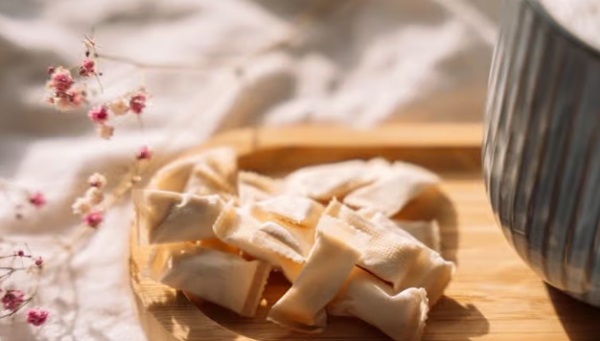
From the Brownstone Institute
A walk through a dozen convenience stores in Montgomery County, Pennsylvania, says a lot about how US nicotine policy actually works. Only about one in eight nicotine-pouch products for sale is legal. The rest are unauthorized—but they’re not all the same. Some are brightly branded, with uncertain ingredients, not approved by any Western regulator, and clearly aimed at impulse buyers. Others—like Sweden’s NOAT—are the opposite: muted, well-made, adult-oriented, and already approved for sale in Europe.
Yet in the United States, NOAT has been told to stop selling. In September 2025, the Food and Drug Administration (FDA) issued the company a warning letter for offering nicotine pouches without marketing authorization. That might make sense if the products were dangerous, but they appear to be among the safest on the market: mild flavors, low nicotine levels, and recyclable paper packaging. In Europe, regulators consider them acceptable. In America, they’re banned. The decision looks, at best, strange—and possibly arbitrary.
What the Market Shows
My October 2025 audit was straightforward. I visited twelve stores and recorded every distinct pouch product visible for sale at the counter. If the item matched one of the twenty ZYN products that the FDA authorized in January, it was counted as legal. Everything else was counted as illegal.
Two of the stores told me they had recently received FDA letters and had already removed most illegal stock. The other ten stores were still dominated by unauthorized products—more than 93 percent of what was on display. Across all twelve locations, about 12 percent of products were legal ZYN, and about 88 percent were not.
The illegal share wasn’t uniform. Many of the unauthorized products were clearly high-nicotine imports with flashy names like Loop, Velo, and Zimo. These products may be fine, but some are probably high in contaminants, and a few often with very high nicotine levels. Others were subdued, plainly meant for adult users. NOAT was a good example of that second group: simple packaging, oat-based filler, restrained flavoring, and branding that makes no effort to look “cool.” It’s the kind of product any regulator serious about harm reduction would welcome.
Enforcement Works
To the FDA’s credit, enforcement does make a difference. The two stores that received official letters quickly pulled their illegal stock. That mirrors the agency’s broader efforts this year: new import alerts to detain unauthorized tobacco products at the border (see also Import Alert 98-06), and hundreds of warning letters to retailers, importers, and distributors.
But effective enforcement can’t solve a supply problem. The list of legal nicotine-pouch products is still extremely short—only a narrow range of ZYN items. Adults who want more variety, or stores that want to meet that demand, inevitably turn to gray-market suppliers. The more limited the legal catalog, the more the illegal market thrives.
Why the NOAT Decision Appears Bizarre
The FDA’s own actions make the situation hard to explain. In January 2025, it authorized twenty ZYN products after finding that they contained far fewer harmful chemicals than cigarettes and could help adult smokers switch. That was progress. But nine months later, the FDA has approved nothing else—while sending a warning letter to NOAT, arguably the least youth-oriented pouch line in the world.
The outcome is bad for legal sellers and public health. ZYN is legal; a handful of clearly risky, high-nicotine imports continue to circulate; and a mild, adult-market brand that meets European safety and labeling rules is banned. Officially, NOAT’s problem is procedural—it lacks a marketing order. But in practical terms, the FDA is punishing the very design choices it claims to value: simplicity, low appeal to minors, and clean ingredients.
This approach also ignores the differences in actual risk. Studies consistently show that nicotine pouches have far fewer toxins than cigarettes and far less variability than many vapes. The biggest pouch concerns are uneven nicotine levels and occasional traces of tobacco-specific nitrosamines, depending on manufacturing quality. The serious contamination issues—heavy metals and inconsistent dosage—belong mostly to disposable vapes, particularly the flood of unregulated imports from China. Treating all “unauthorized” products as equally bad blurs those distinctions and undermines proportional enforcement.
A Better Balance: Enforce Upstream, Widen the Legal Path
My small Montgomery County survey suggests a simple formula for improvement.
First, keep enforcement targeted and focused on suppliers, not just clerks. Warning letters clearly change behavior at the store level, but the biggest impact will come from auditing distributors and importers, and stopping bad shipments before they reach retail shelves.
Second, make compliance easy. A single-page list of authorized nicotine-pouch products—currently the twenty approved ZYN items—should be posted in every store and attached to distributor invoices. Point-of-sale systems can block barcodes for anything not on the list, and retailers could affirm, once a year, that they stock only approved items.
Third, widen the legal lane. The FDA launched a pilot program in September 2025 to speed review of new pouch applications. That program should spell out exactly what evidence is needed—chemical data, toxicology, nicotine release rates, and behavioral studies—and make timely decisions. If products like NOAT meet those standards, they should be authorized quickly. Legal competition among adult-oriented brands will crowd out the sketchy imports far faster than enforcement alone.
The Bottom Line
Enforcement matters, and the data show it works—where it happens. But the legal market is too narrow to protect consumers or encourage innovation. The current regime leaves a few ZYN products as lonely legal islands in a sea of gray-market pouches that range from sensible to reckless.
The FDA’s treatment of NOAT stands out as a case study in inconsistency: a quiet, adult-focused brand approved in Europe yet effectively banned in the US, while flashier and riskier options continue to slip through. That’s not a public-health victory; it’s a missed opportunity.
If the goal is to help adult smokers move to lower-risk products while keeping youth use low, the path forward is clear: enforce smartly, make compliance easy, and give good products a fair shot. Right now, we’re doing the first part well—but failing at the second and third. It’s time to fix that.
-

 Business2 days ago
Business2 days agoWhy Does Canada “Lead” the World in Funding Racist Indoctrination?
-

 Business2 days ago
Business2 days agoLoblaws Owes Canadians Up to $500 Million in “Secret” Bread Cash
-

 Dan McTeague2 days ago
Dan McTeague2 days agoWill this deal actually build a pipeline in Canada?
-

 Economy13 hours ago
Economy13 hours agoAffordable housing out of reach everywhere in Canada
-
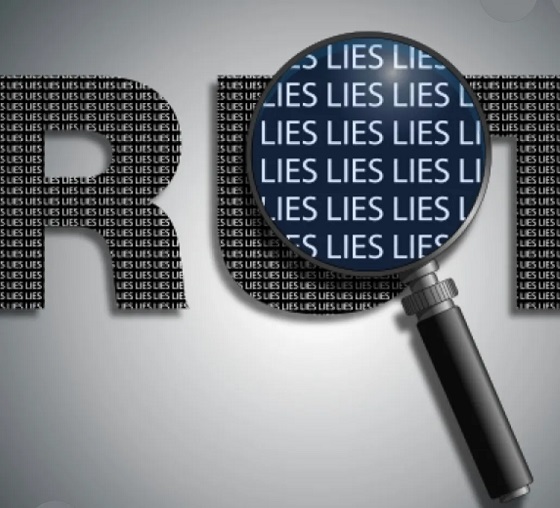
 Media2 days ago
Media2 days agoThey know they are lying, we know they are lying and they know we know but the lies continue
-

 Censorship Industrial Complex2 days ago
Censorship Industrial Complex2 days agoUS Condemns EU Censorship Pressure, Defends X
-
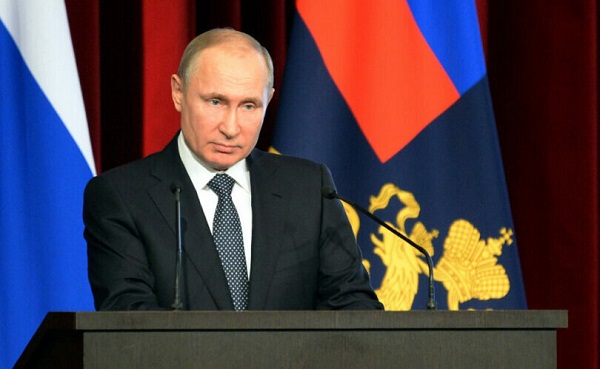
 Focal Points2 days ago
Focal Points2 days agoThe West Needs Bogeymen (Especially Russia)
-
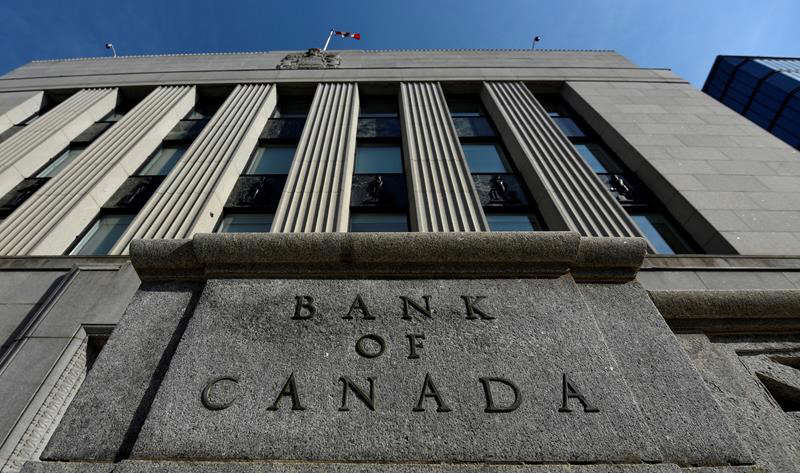
 Banks2 days ago
Banks2 days agoTo increase competition in Canadian banking, mandate and mindset of bank regulators must change
